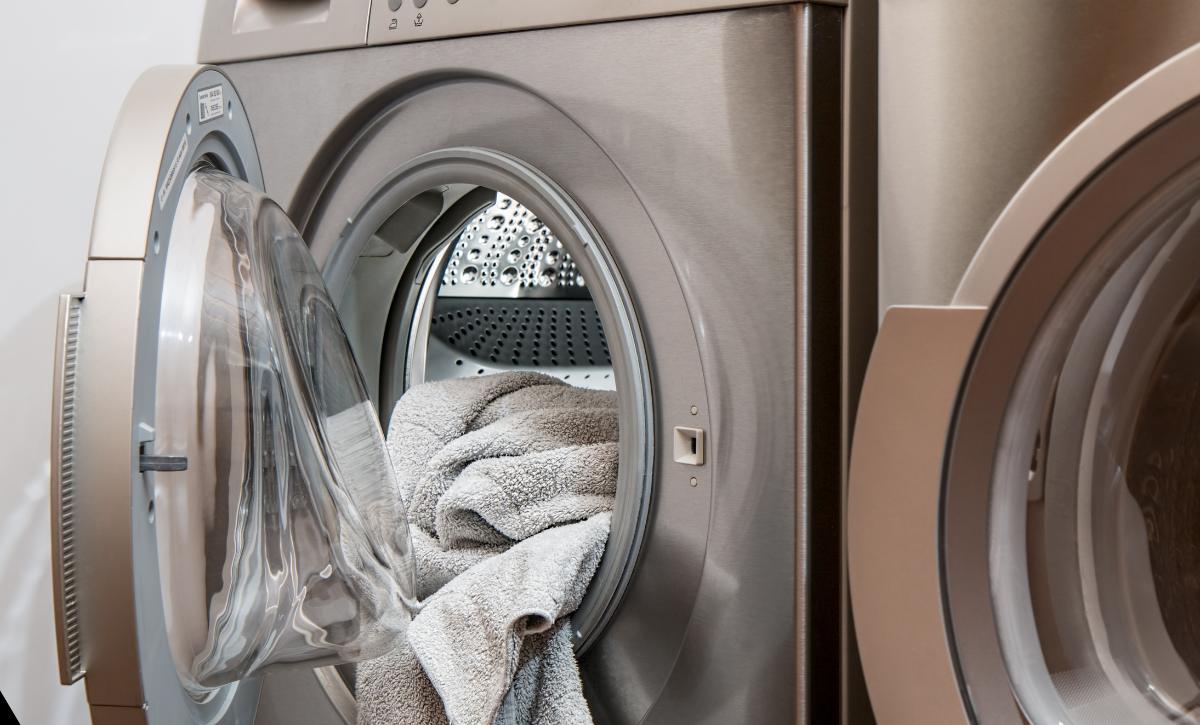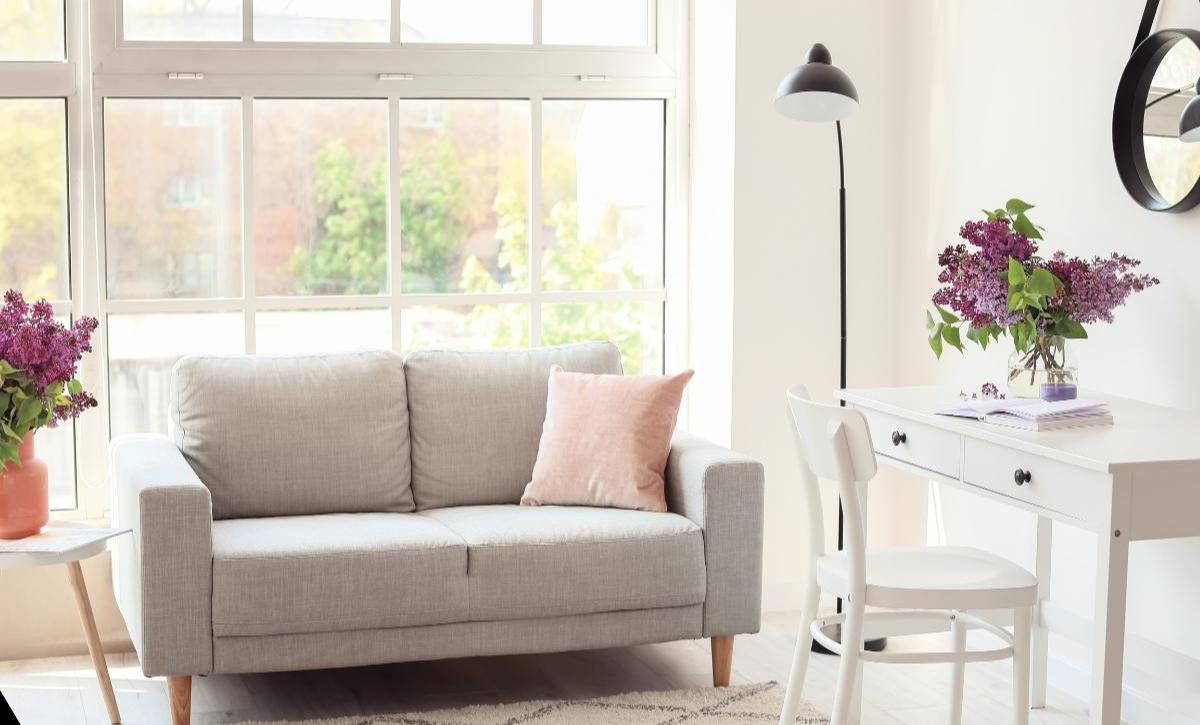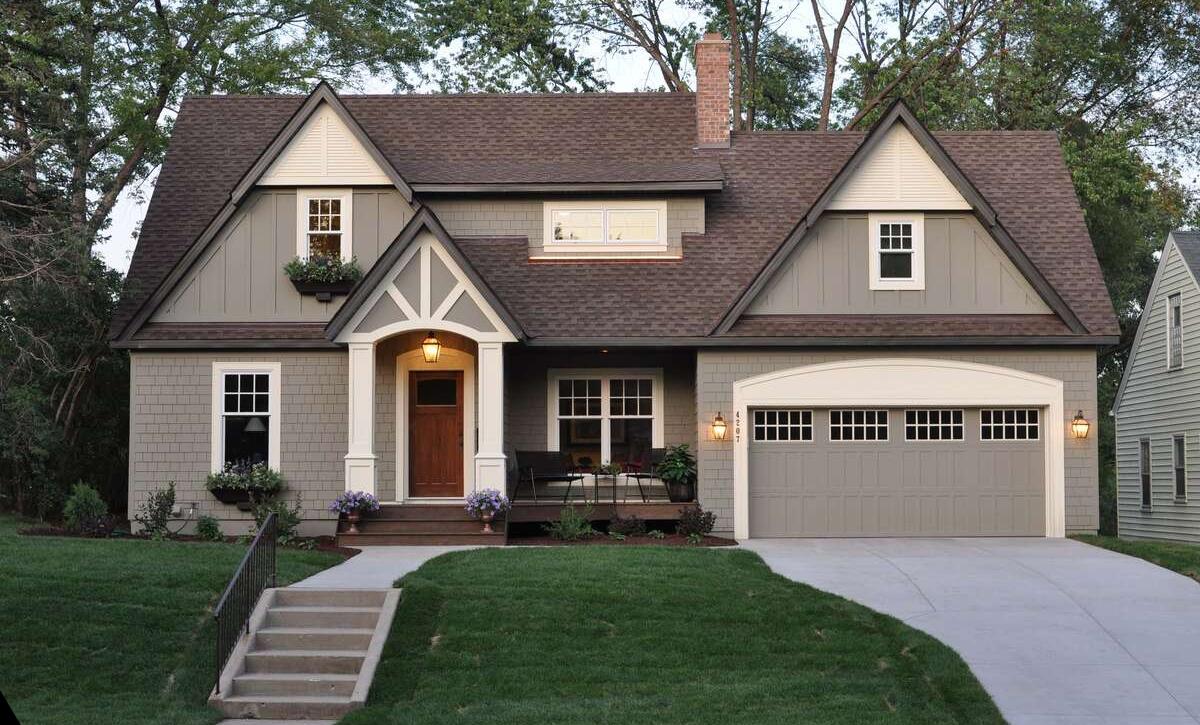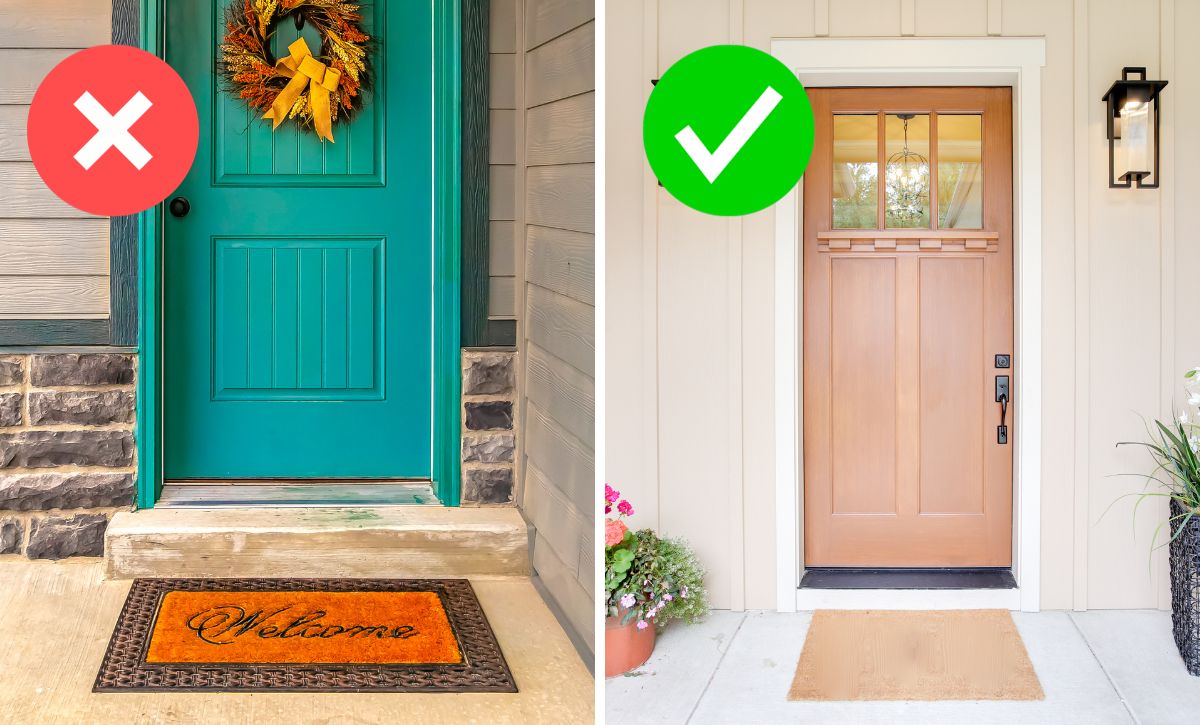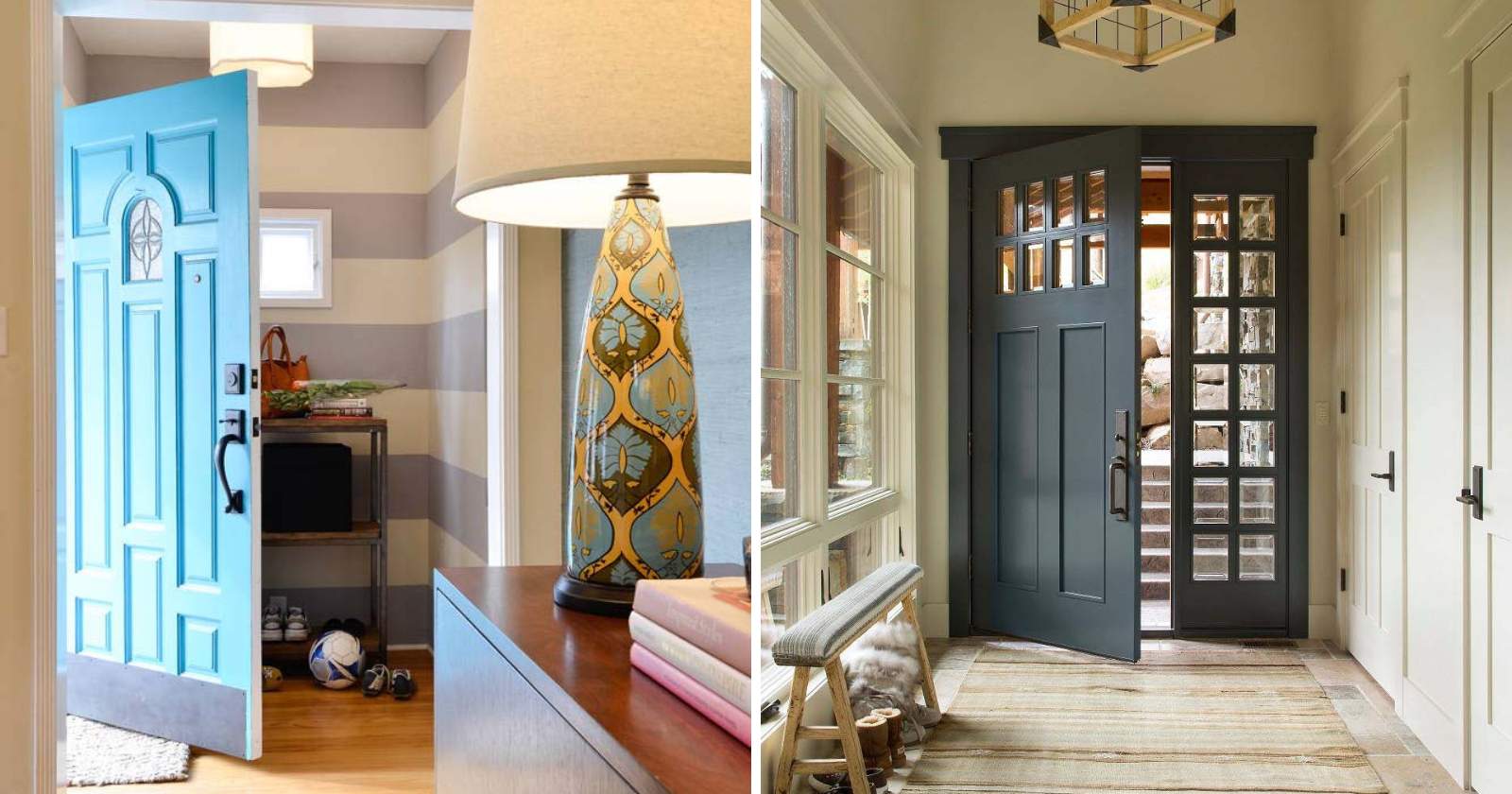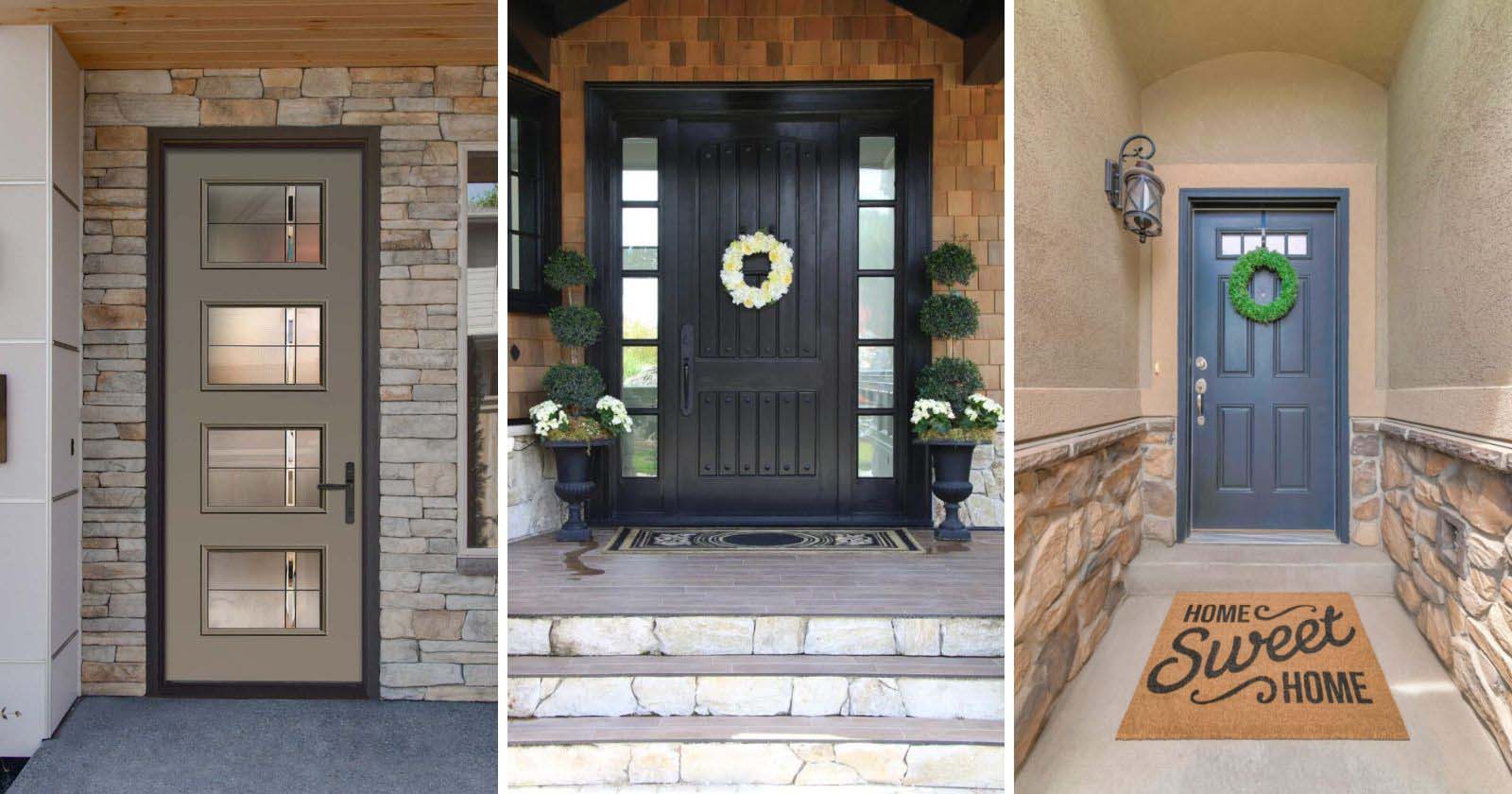Curtains are beneficial window dressings. They keep the cold out of the room, offer you some much-needed privacy, and complete the design of a room nicely. They’re also relatively simple to hang, so what are you waiting for?
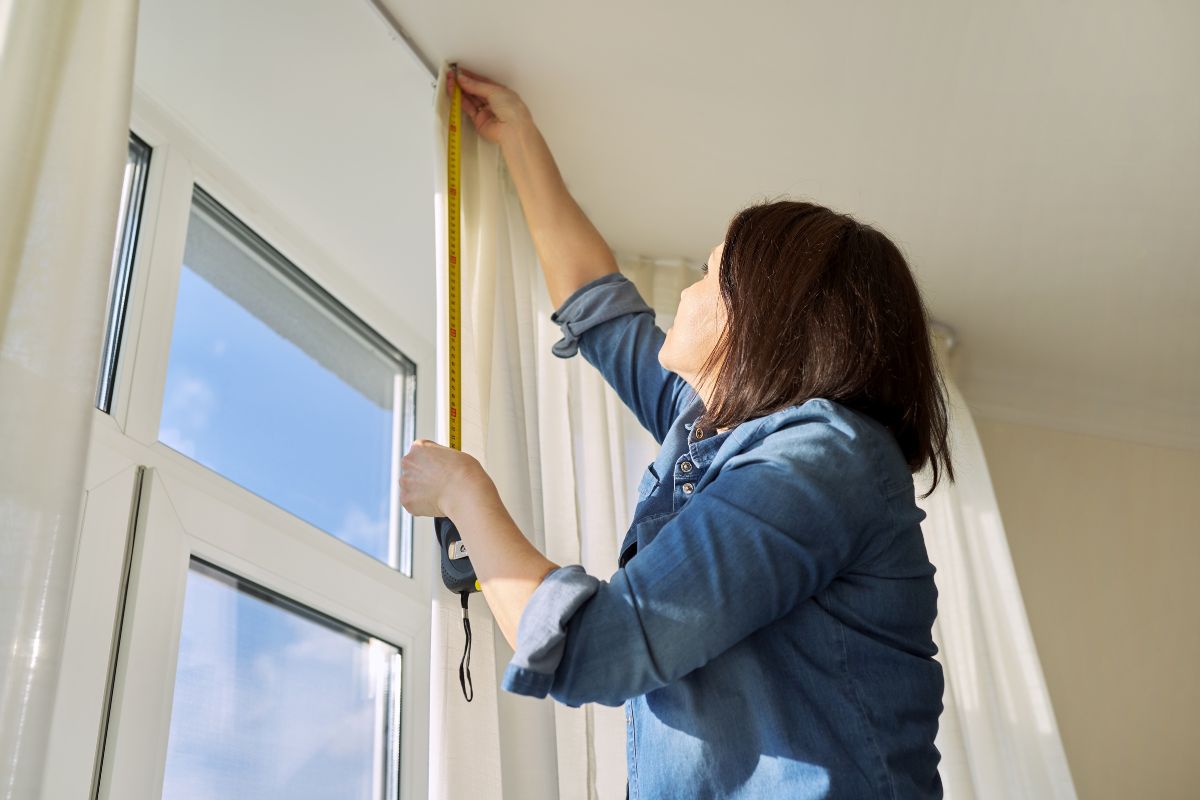
Buying curtain panels seems easy when you first start your research. However, you’ll quickly notice that there are plenty of options for sizing. You’ll need to work out the optimal size of your window’s width and length, and how this correlates to the standard curtain sizes.
Don’t worry, it’s still possible to buy curtains without your windows being the optimal size. And we’ll be taking you through how to do just this easily. By the end of this article, you should be feeling much more comfortable with how to buy the correct size curtains.
Let’s dive right in, shall we?
Standard Curtain Panel Sizes
Almost all curtains and drapes come in standard sizes. This is so that different companies can offer a set size, making it easier for the consumer who wants to enjoy the same size curtain throughout their house without necessarily having to purchase every single curtain from one supplier.
Think of curtains like clothes – every store offers their different clothing in the same sizes so that you know which size to go for in every store.
Interior designers and architects work closely with the standard sizes of curtains. This is so that, as long as you have a standard window size, you should be able to find curtains that fit without any issues.
Standard curtains come in three lengths – 84 inches, 96 inches, or 108 inches. It’s also not uncommon to see sizes 63 inches and 120 inches offered, but these are less commonly purchased.
When it comes to the width, there is less standardization. However, the most common length to see offered is 54 inches. Bear in mind that this is for one curtain, and most people don’t pull one curtain over the entire window. Instead, they’ll use two curtains, one on each side of the wall.
Measuring Your Window For Curtains
Curtains are going to look best when you take the time to measure them correctly. Without measuring your window, your window dressings will look awkward, frumpy, and undesirable.
So, how do you measure the window correctly? Let’s find out.
Follow The Rule Of 10s
10 is the specific number that you should keep in mind when measuring your curtains. 10 is the magic number when measuring windows, as you want the curtains to be 10 inches above the trim, as well as 10 inches on either side of the window for the best fit.
However, if you don’t have 10 inches on either side of the window to account for the curtains, aim for 6. This will prevent the fabric from encroaching on the window when you want them to be drawn.
If you have higher ceilings, these will be important for window placement. The curtain rod should be at the ceiling, just below the crown molding, or at least 10 inches above the window trim.
Field Measure
Field measurements are more reliable as they require you to take the time to measure multiple areas of the window. Most houses have plenty of windows that aren’t level, which means the measurements will be off depending on where you measure.
To field measure, use your measuring tape to get the three lengths of one window. Measure in the middle of the window, then the left side, finishing with the right.
This will give you the most accurate measurements of the window so that you can find the average of the numbers.
If you don’t do this, you might order curtains depending on inaccurate measurements. This means that your curtains will be more likely to look awkward. Worst of all, they might not fit at all!
Step-By-Step Measuring Guide
- Start with the length. Measure the left-hand side of the window’s length, then the right-hand side, and finish by measuring down the middle. Make sure you write all of these measurements down.
- Find the average of these numbers – this will be your final window length to use when purchasing your curtains.
- Repeat steps 1 and 2 for the width of your curtains. Now you’ll be left with both an average length and and width of your window.
- Add 10 inches to the length of your window measurement to allow for the fabric above the window.
- Add 10 inches to the width of your window measurement, on either side, to allow for the bunched fabric when the windows are open. If you don’t have 10 inches on either side of the window, add at least 6 inches instead.
- Make sure to write these final measurements down as they will be the size of the curtains you’ll want to buy.
- When purchasing your curtains, choose the length and width that is closest to your accurate measurements. If you cannot get the exact measurements, opt for the bigger option. Choosing a curtain smaller than your measurements might make it ill-fitting and leave gaps around the fabric.
Other Types Of Curtain To Choose From
While the standard curtain is floor-to-ceiling, there are actually more types for you to choose from. If you’re using curtains as more of a decorative statement, then you can opt for one of the following types.
If you do want your curtains to block light out, though, these might not be the best choice. Good blackout curtains will need to surround the entire window to ensure as much of the light gets blocked as possible.
Tier Curtains
Tier curtains are certainly interesting to look at! They’re made for smaller windows that don’t require much covering. They’ll typically only cover the bottom half of the curtain. These are best used in the kitchen or bathroom where you can enjoy the semi-privacy these curtains offer.
The lengths these curtains are offered in are either 24 inches or 36 inches. The width is often 54 inches.
These are the standard sizes, but you can opt for customized tier curtains if your windows are of unusual size.
Valance Curtains
The opposite of tiered curtains, valances are thinner curtains used to cover the top portion of the window. They’re popular for people who don’t need an entire curtain setup, such as if they have plenty of bay windows.
Valances are also great at covering the unsightly rollers of blinds or shades within a window. These are design features rather than functional curtains as they won’t block out much light at all.
The standard sizing for valances is between 3 and 5 inches deep and 50 inches wide. There isn’t a standard size for the length of these curtains, so you might have trouble finding valances from different manufacturers that are the exact same length.
Standard Drop For Curtains
One important thing to remember is that curtains don’t stop at the exact same length as your window. There are plenty of curtain drop sizes to choose from, but the three most common are 54 inches, 72 inches, and 90 inches.
Some manufacturers will take into account the possibility of larger windows, extending the curtain drop to 108 inches.
Many want their curtain drop to reach the bottom of the floor so that their curtains reach from the ceiling to the floor. Others will want the curtains to be only slightly longer than the window, so they’ll opt for the shorter drop.
For example, if you wanted floor-to-ceiling curtains and the 54-inch drop doesn’t reach the floor, you’ll need to exchange them for 72-inch drop curtains.
Buying Standard Length Curtains
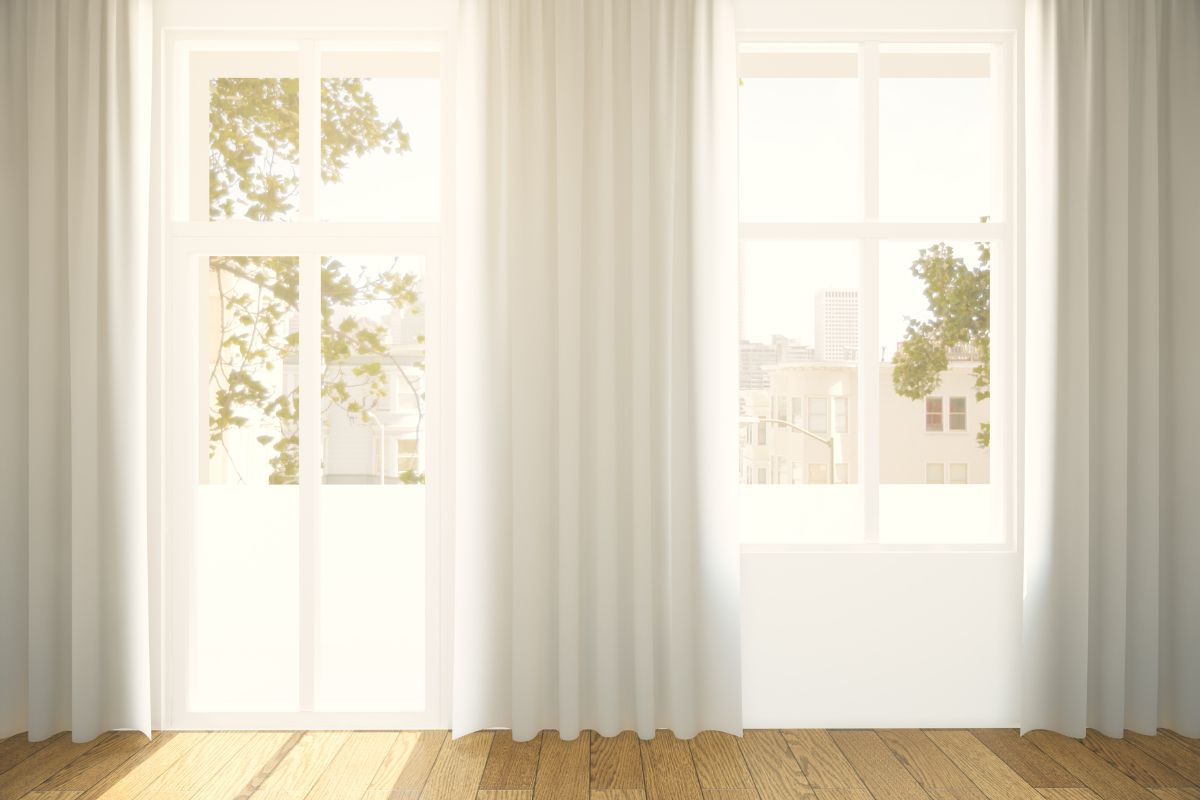
The three most popular standard curtain lengths are 84 inches, 96 inches, and 108 inches. However, just because these are the most popular doesn’t mean that they are recommended.
We always advise people to stay away from 84-inch curtains unless they have very low ceilings. They’ll only be slightly longer than your window and will look very strange in the middle of your wall. More often than not they look ill-fitting and awkward.
On the other hand, the 96 and 108-inch options are much better looking and fit in a wide variety of settings. Choose whichever is closest to the measurements that we walked through earlier.
If your measurements are in the middle of these two standard lengths, we suggest opting for the longer one. It’s better to have longer curtains than worry about the shorter length looking awkward and unattractive.
Longer curtains tend to look more expensive and elegant, and this is true even if the curtain is hidden behind furniture.
Longer curtains have a heavier look to them which will give away their length, so don’t try and fake the longer curtain look with shorter ones and well-placed furniture. Your guests will be able to tell.
Choosing Your Curtain Rods
There are plenty of lengths that you can choose from when it comes to your curtain rods. However, as an accessory to use with curtains, they still follow a standardized size pattern. Here are the standard sizes for curtain rods:
- 24 to 48 inches
- 48 to 84 inches
- 66 to 120 inches
- 120 to 170 inches
Many curtain rods are adjustable so that you can make them the perfect length to fit above your windows. As long as your window width is somewhere within the size range for the curtain rod you choose, it will be able to fit perfectly above the window.
Types Of Curtain Rods
There are plenty of types of curtain rods to choose from. Half of the choice will be for design purposes, while half will also be for functionality. Let’s take a look at some of the most common curtain rods to pick from.
1. Acrylic Rods
These are cheap, easy to find, and simple to look at. These are ideal for minimalists who want a clean look without fancy stoppers or metallic colors. These are often clear but can also come in other muted colors.
Acrylic curtain rods are excellent to use with pleated curtains with metal rings.
2. Cafe Curtain Rods
These pocket-style rods are great for sheer curtains or thinner fabric curtains. They are lovely and sophisticated and often come with the appearance of brushed metal. These curtain rods are commonly seen with tiered curtains.
3. Decorative Iron Rod
A curtain rod that is usually installed more than 6 inches above the window frame, iron rods are the most commonly used type of curtain rod. They can be painted in any color and come with a wide range of stoppers.
These curtain rods are versatile, strong, and dependable. If you head to a hardware store, you’ll see a considerably higher amount of iron rods than other types.
4. Extendable Iron Rod
Same as the curtain rod above, this type only has one difference – it’s extendable. This means that there are two iron rods, one hollow and another solid, that slide in and out of each other.
This allows you to adjust the width of the rod without any issues, leaving you with the perfect length to fit above your window, each time. You could get multiple of the same extendable rods for all of the windows in your house and they would all be the perfect fit thanks to the adjustability.
5. I-Beam Curtain Rod
An I-beam curtain rod is an interesting one. Rather than the curtain rod feeding through the curtain fabric like most of the other rods we’ve looked at, I-beam rods have eyelet hooks that slide along a horizontal plate.
This allows the curtain to slide more gracefully across the window, offering a nicer effect in any room.
6. Traverse Curtain Rod
These rods work well for pinch pleated curtains, as well as regular and decorative curtains. These are similar to I-beam curtain rods in which they hook the fabric and allow it to slide across the curtain rod without any hitches.
7. Wooden Curtain Rod
Finally, wooden curtain rods are great for classic decorative styles as they look much more timeless and expensive. They’re heavy, reliable, and work well with any kind of curtain you can imagine.
They can also be painted or stained to whatever color will suit your space the best. The only thing you need to be wary of is that wooden curtain rods deteriorate quicker than acrylic or iron curtain rods.
Measuring For Your Curtain Rods
Since most curtain rods are adjustable, it shouldn’t be too difficult for you to measure the correct size. Even if you don’t measure it perfectly correctly, the adjustability means that it won’t matter too much.
All you need to do is measure the width of your window, keeping the tape measure as straight as possible, before adding the six inches to either side of the width. For example, if your window was 50 inches wide, your curtain rod will need to be around 62 inches.
The six inches on either side of the window is an allowance for the curtains to be folded together when you want to draw them open. Leaving this amount of space on either side of the window prevents the curtains from blocking light when they’re open.
This means that you’ll still be able to benefit from the entirety of the window instead of half of it being blocked by the curtains.
What About Custom Curtains?
If you’re struggling to choose the best length for your curtains, we recommend considering working with a designer. They can make you a pair of custom curtains that fit your windows like a dream.
This is often utilized by those who have odd-shaped windows or unconventional living spaces. However, anyone can pay for a designer to make their curtains for them.
You might even prefer to opt for this route since you can choose the ideal pattern, finishes, and more for your curtains. The designer will give you specific instructions of what measurements they need, too.
You can also work with a designer more closely on the placement of your drapes. They will be skilled in the field and therefore be able to give you specialist advice on where to hang your curtain rod so that the curtains fall beautifully in your room.
While using standard sized curtains might be cheaper, using a designer will leave you with the best looking curtains possible. What’s the saying… If you’re going to do something, do it right!
Summary
Thanks for reading our article on how to measure your windows for curtains. It is super simple to measure your window and purchase standard sized curtains.
All you need to do is spend some time getting accurate measurements from multiple points of the window and adding a buffer around it to account for the additional fabric.
There are a few standardized sizes for curtains, ranging from 63 inches to 120 inches. Some designers will make smaller or larger curtains, too, but as a generalized rule, these are the size extremes you can expect to find in stores.
We hope that our article has made it easier for you to choose the best curtains for your space! If in doubt, contact a designer about custom curtains.



